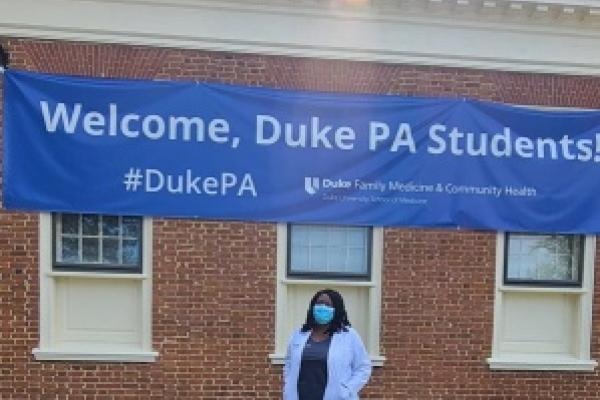
Second-year PA student Rayena McLaughlin poses in front of a welcome banner for the new class of PA students.
As the COVID-19 global pandemic moves into August, what everyone hoped would be a time-limited issue is becoming the country’s new standard. Masks have become a fashion statement as well as a political flashpoint. All are tired of Zoom meetings, and desperate extroverts are socializing across yards.
At the Duke Physician Assistant Program, leaders are leaning into challenges while looking for opportunities to re-imagine the structure of students’ education, not just for the immediate crisis, but for the future.
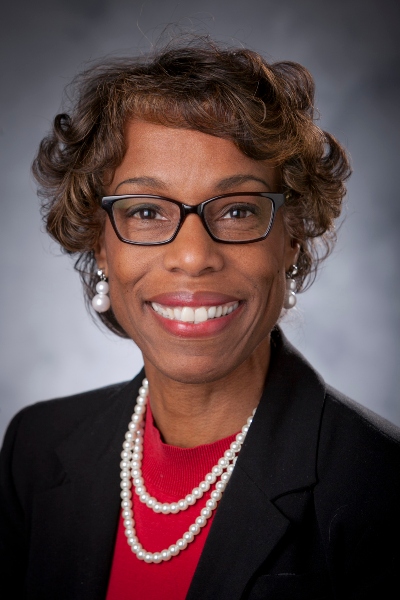
“The wonderful curriculum that we had nicely prepared to deliver is not a remote, virtual curriculum and will not fit these times,” says Program Director Jacqueline S. Barnett, DHSc, MHS, PA-C. “We do not want to try to force a square into a circle, but we’re going to have to take that square curriculum and chisel it into a circle to make it fit into this new virtual paradigm.”
Barnett is not a stranger to quick adaptation and creative problem-solving. While working as a faculty member at George Washington University in Washington, D.C., she dealt with the logistical and psychological challenges presented by 9/11.
“I was the clinical director when the plane hit the Pentagon and we had several students on rotation in the Pentagon that day. The impact that it had on our city, our curriculum, the post-traumatic stress that it caused many of us because we physically could see the smoke coming from the Pentagon from our office window,” she says. “The students did not want to immediately return to clinical rotation sites, as the entire D.C.-area was experiencing post-traumatic stress, and we had to develop a plan on moving forward.
“And even though this hasn’t been a purposeful and terrorist attack like 9/11, the impact on our learning environment, and being able to get students back in clinic, and being able to teach and move back into a halfway normal space is similar. This pandemic has had a phenomenal impact across every aspect of our lives, our approach to PA education and health care delivery.”
During the pandemic, staff and faculty members continue to come together for bi-weekly video check-ins. Yoga pants replace business casual, and office bookshelves are now virtual scenes of San Francisco, tropical beaches and springtime landscapes. Kids and pets occasionally walk, dance, or jump across the frame.
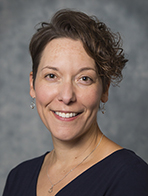
Associate Program Director April Stouder, MHS, PA-C, says while her biggest strain has been working while parenting and supporting the school work of two children, she also misses the in-person connection with colleagues.
“I miss the everyday, spontaneous conversations that happen in hallways, doorways and workrooms,” Stouder says. “It’s so much easier to walk down the hall to ask someone a question than send another email or have to schedule a Zoom meeting.“
Faculty and staff are learning an entirely new way of working while also doing some of the most logistically challenging tasks of their careers. The transition has not been seamless, yet they function as a team to work through each roadblock, starting with the March 10 decision to suspend in-person coursework.
The Pandemic Arrives
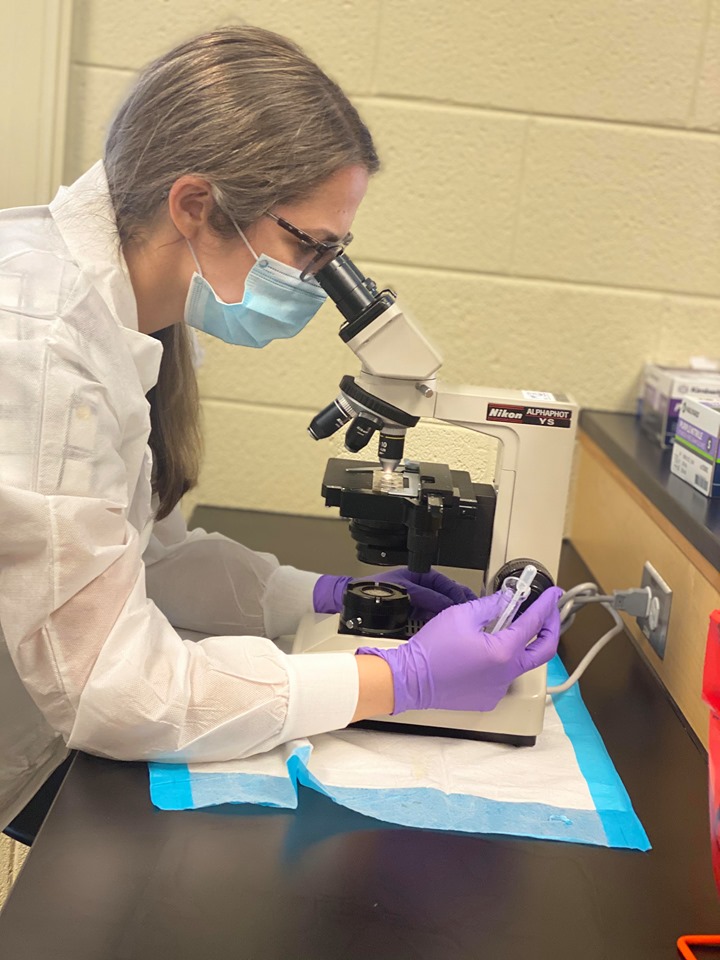
On the morning of March 10, the Duke Physician Assistant (PA) Program’s first-year students were in the second-floor classroom watching a neurology lecture.
The novel Coronavirus was beginning to pick up steam as it churned through the United States, and travel bans were popping up across the world. Still, though many Americans sensed its looming presence, it continued to feel like something relegated to cruise ships and foreign countries.
At lunchtime, students scattered around the building at 800 S. Duke St., like usual–heading to favorite study spots or the shade of outdoor umbrellas. In addition to the typical mid-semester woes, the discussion turned toward worries and predictions about the uncertainty of the next few weeks. Shelby Neil, Stead Society president for the Class of 2021, says students suspected the change to online instruction was on the horizon and felt uneasy.
“I had heard of other PA schools across the nation closing in the few days before, so I suspected converting to virtual classes was to happen soon,” Neil recalls.
Behind the scenes, staff and faculty planned contingency after contingency as COVID-19 shuttered institutions all over the country.
That afternoon, Duke University President Vincent Price canceled all in-person classes until at least March 23. The next morning, the World Health Organization declared COVID-19 a global pandemic.
For many undergraduate programs already on spring break, this initially meant extending the break by one week, giving as much time as possible for strategic planning. For graduate schools such as the PA program, a different calendar meant navigating a course change overnight.
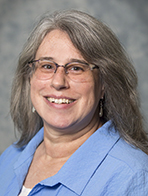
“There was a lot of messaging to the undergraduates. They were on spring break, and they were extending their spring break for a week so the professors would have plenty of time to plan,” recalls Annamarie Streilein, MHS, PA-C, director of preclinical education for the PA program. “Of course, we had classes at 8:10 the next morning.”
Program leadership immediately scheduled conference calls and video chats to discuss how to deliver both the next day’s material and ongoing instruction.
Barnett says that with 180 students and nearly 40 faculty and staff, Duke is one of the largest PA programs in the country.
“We are [like] a huge military vessel. And unlike a small canoe or small boat that you can turn around on a dime, when you have a vessel that large, you have to be very calculated in how you make those turns,” Barnett says.
Streilein says the most pressing issue was the planned guest lecturers for the next day. Ultimately, the team sent out the PowerPoint slides and told students to contact the instructors with questions. “There wasn’t time to prerecord anything; there really was less than 12 hours before we had to make those changes.”
Transitions
The next week included near-daily strategy meetings as faculty and staff learned to use Zoom and transition to remote education. Each night, Streilein sent out an email update to the students with as much transparency as possible.
“We have definitely found that clear, frequent communication with the most definitive information we can share has been helpful,” says Streilein, “and just admitting when we don’t know something.”
That Friday, Barnett sent an email to faculty and staff, thanking them for their work during the previous three days. She wrote: “I am so proud of what we accomplished on such short notice. Without a doubt, this past week of unexpected events forced us out of our comfort zone. However, I have to believe that this period of mandated ‘disruptive innovation’ will promote our continued growth, adaptability, and transformation. We will be a better program.”
She also credited the students for their part in the transition.
“I think the students have helped keep us sane,” Barnett says. “They have been so gracious and grateful for everything the program is doing to try to keep them on track. [. . .] They have been just as worried about us as we have been about them.”
Meanwhile, some challenges morphed into a game of educational Whack-a-Mole. Students returning to their home states and towns meant a schedule jam-packed with vital content that needed to be accessible in several time zones. Technology issues that once required a short walk down the hall now required remote help desk support. Zoom recordings took time to render. The strain on home internet service became apparent–not just for students, but for employees, as well, as family members, roommates and children all needed access simultaneously.
Neil says the sudden separation was painful for the students.
“We were so used to seeing each other at school every day that it was jarring to be so isolated all of a sudden,” she recalls. “We had been such a tight-knit community, and it felt like that bond was in jeopardy. A few times, we got a little teary-eyed during Zoom sessions when we talked about how much we missed each other.”
Second-year students on global health electives in Ecuador arrived back in Durham on March 17. They began their quarantine just as the rest of the class got word of the immediate suspension of local rotations.
Program accreditation, as well as the imperative to send students out into the world with the best education possible, meant students must meet specific criteria during the clinical year regarding patient contact and hands-on experience. The clinical team started by front-loading the didactic portions of the year, counting on students being allowed back into at least some clinics soon.
The Pandemic Continues
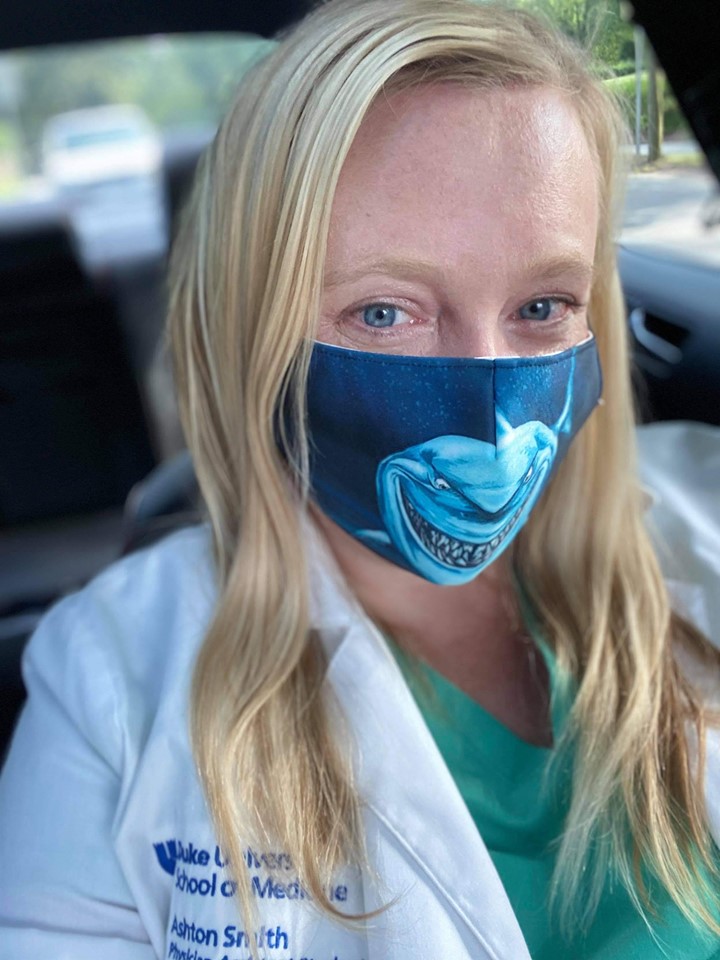
The planned reopening date of March 23 came and went, as did many subsequent hoped-for endings of the pandemic and its effects on education.
Barnett says the PA program faculty worked closely with clerkship directors and the Duke University School of Medicine to come up with a curriculum that could be delivered online to augment the return to rotations.
“We're continuing to do that with virtual electives, like electives in community health, electives on pandemics and pandemic medicine,” she says.
One virtual opportunity was training in medication-assisted treatment to expand students' knowledge about managing patients with opioid disorders. Some students chose a rotation working with the Durham County Department of Public Health on COVID-19 contact tracing.
The challenge did not end once students were allowed back into clinical work on May 26, though. Scheduling rotations quickly became a big hurdle.
Clinical-year support staff Kate Holeman says finding clinical sites willing to take students proved difficult.
"I have had two crying spells. [The] first one was with Class of 2020, when we were told students could go back to clinic, so we had to work like mad to email clinical sites to see if they would take students,” Holeman recalls. “Once we got the schedules complete and out to students, I was overwhelmed with all the things that need to be done in three weeks, basically. Paperwork, online modules for the sites, etc. Then, as soon as that was done it was time to do it all over again with the Class of 2021.”
Looking Ahead
For the second-year PA students, a milestone sits on the horizon of this virus: graduation. Originally planned to be a ceremony held at Duke Chapel, commencement will now be live-streamed via Zoom.
As the Class of 2020 moves into their new roles as certified PAs, the class of 2022 begins their journey through the program. The incoming class of 91 students will start with online instruction supplemented by small-group, in-person activities during the fall semester.
Students received COVID-19 tests prior to the start of the semester. There will be no fall break this year, and students should expect to stay local until at least Thanksgiving. For in-person activities, students will fill out symptom monitoring via an app on their phones. Increased PPE and sanitizer will also be available.
Into the Unknown
In ordinary years, admissions interviews are one of the most significant events to take place in the Duke PA program building. With more than 20 applicants per interview day, space is always tight in conference rooms, leaving no possibility of distancing. Many applicants must use air travel to get to Durham.
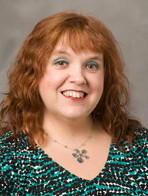
Always thinking toward future students, Assistant Admissions Director Wendy Elwell-Paige, M.S., says the program plans to move admissions interviews entirely online this year.
"As we began to realize there was no end in sight, our admissions team began brainstorming what a virtual platform might look like,” she says. “Dr. Barnett encouraged us to not try to force a typical interview day experience into an identical Zoom experience because it would not work."
Determined not to get weighed down in the difficulties this posed, she realized the virtual format could be a great opportunity.
"We could be more flexible with our interview times. We could invite our alumni and preceptors to be a part of our interviewing team. We could offer a lot more time for student engagement,” Elwell-Paige says. “Not being tied to a structure opened up possibilities."
Stouder says the team has been working hard to keep the personal feeling of the interview day.
“We want to be inclusive and accessible and preserve much of the warmth and connections that occur with in-person interviews,” she says. “The virtual setting has provided an opportunity for creativity and new ventures that didn’t exist in our typical face-to-face format, and we’re excited to see how applicants respond!”
With no certainty in the future course of the COVID-19 pandemic, the Duke PA program continues to steer its vessel through the uncharted waters that lie ahead. Still, Elwell believes they are up to the task.
“Of course, anything new seems wonderful and daunting at the same time, but we know we will rise to this challenge.
Courtney Decker contributed to this story.